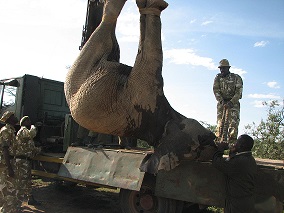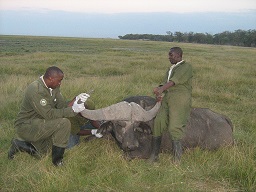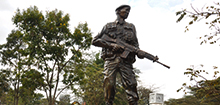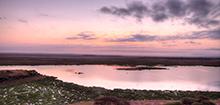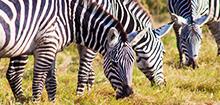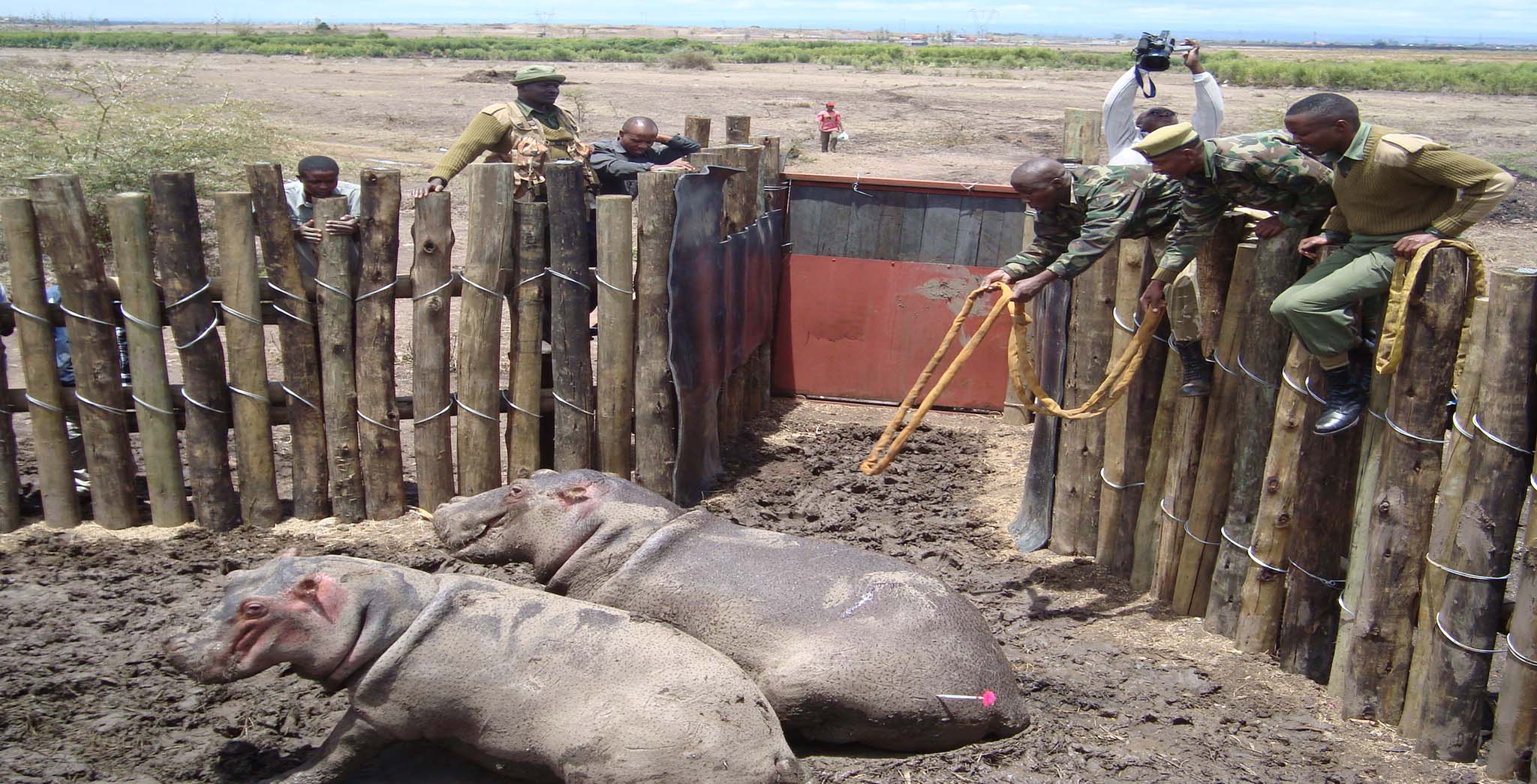Six satellite mobile veterinary clinics variously referred to as Mobile Veterinary Units (MVUs) are strategically distributed in areas considered as conservation hotspots. This has been made possible courtesy of conservation partners and stakeholders such as the David Sheldrick Wildlife Trust, Lewa Wildlife Conservancy and Animal Rights Reserved.
Their main purpose is to cascade veterinary services to areas that are most deserving. The MVUs have drastically reduced the cost of facilitating teams from the headquarters to the field and also the response time to emergencies. It is a win-win situation where even though the reported case load still remains high, over ninety per cent of all the reported cases are attended and indeed this portends is good for conservation.
The six are:
- Tsavo Conservation Area MVU based at Tsavo East N.P
- Central Rift MVU based in Maasai Mara serving the region
- Naivasha MVU serving the parts of Central Rift and Western
- Southern Conservation Area MVU based at Amboseli
- Mountain Region and Laikipia MVU based at Lewa Downs Conservancy
- Eastern MVU based at Meru N.P
Our role as a department is to offer timely veterinary interventions in a consistent professional manner as a matter of priority. The interventions are mainly focused on veterinary emergencies that involves saving the lives of sick, distressed and injured wildlife in order to relieve them from pain and suffering.
An annual average of over 400 cases requiring veterinary intervention and cutting across all wildlife species are normally reported and successfully attended. The majority of the cases involve removal of wire and winch snares, arrows and spear heads lodged on animals in human-wildlife conflict hotspots, and a substantial number of post-mortem procedures to ascertain causes of deaths in wildlife especially for such species like the black and white rhinoceros and the African elephant.
Management of wildlife diseases
Due to its rich wildlife heritage and a competent conservation body the Kenya Wildlife Service (KWS), Kenya is favourably positioned as a country. This rich biodiversity demands a smart systematic and professional health management approach that ensures timely treatment of sick and distressed wildlife to reduce mortalities and the spread of disease hence beneficial to species conservation and survival.
An early warning system that accurately predicts disease outbreaks, including those that could spread to wildlife species with a high risk of extinction, livestock and humans, greatly reduces intervention and management costs in the face of epidemics. In return, a healthy wildlife population with a special emphasis on endangered wildlife species will greatly support the country’s vital ecotourism industry.
There exists several challenges that are evolving in disease management. The emergence of new infections and the limitations in terms of understanding disease dynamics in most wildlife populations is becoming an issue in the world. Our veterinary scientists are in constant engagement with conservation partners, research institutions and through a multi-sectoral and multidisciplinary platform under the “One health” concept are trying to unearth circulating pathogens that may be of potential threat to wildlife, livestock and public health.
Another emerging challenge is the increased interactions between domestic animals, humans and wildlife. Many communities live in close contact with wildlife as over 75% of wildlife life outside protected areas. The interactions have intensified over the recent past due to a number of reasons.
- Rising human population and settlement or encroachment of protected and hitherto wildlife dispersal areas and migration corridors.
- Effects of global warming leading to irregular rain patterns and seasons. The impact has been unpredictable drought, low or higher than normal precipitations. Sometimes this has resulted in humans and their livestock competing with wildlife for scarce resources such as water and pasture therefore bringing them to very close proximity at the watering points and grazing land the result has been a spill-over of pathogens and diseases from domestic animals to wildlife and vice versa. This has also increased the likelihood of poaching wildlife for subsistence and commercial purposes.
- The changing weather patterns as a result of climate change directly impacts on host/vector/pathogen dynamics. Coupled with the rapid human and animal movements, information technology, elaborate travel linkages as well as the threat of bioterrorism, diseases are likely to spread from one continent to another in a very fast manner resulting from this global village phenomenon. The unabated human-livestock-wildlife interactions have greatly enhanced disease transmission and the emergence and propagation of harmful infectious diseases. Zoonotic diseases such as rabies, Rift valley fever, avian influenza, bovine tuberculosis, trypanosomiasis and a host of other parasitic diseases when they spill-over to humans they become sometimes very difficult to treat and end up becoming a health burden to states around the world. The emergence of the trans-boundary animal diseases (TADs) such the Rinderpest, Foot and Mouth Disease (FMD) and African Swine Fever (ASF) calls for constant monitoring and surveillance as a step towards their prevention and eradication. In order to face these challenges sufficiently we are constantly devising adaptive, forward looking and multidisciplinary universal solutions to conserving our treasured wildlife.
The genetics and molecular laboratory
The establishment and subsequent commissioning of the first of its kind Genetics and Forensics laboratory in the region at the KWS headquarters in Langáta is a further statement of the seriousness with which KWS treats wildlife conservation. The ultra-modern facility will specifically address three areas of concern notably; illegal trade in bush meat, game trophies as well as contemporary studies and diagnostic procedures for diseases affecting wildlife. Among the anticipated benefits of the laboratory are:
- Reliable identification of wildlife and their products to enhance prosecution and convictions of wildlife crime cases.
- Establishment of a database of species genetic markers to aid in quick and reliable identification of wildlife and their products.
- Increased convictions of wildlife related crimes to deter offenders and subsequent reduction of illegal killing of wildlife.
- Identification of possible source of contraband wildlife products and especially the rhino horn and ivory usually confiscated on transit.
- Provide a platform to aid the certification or licensing for export of products whose origin or history is suspect to curb illegal exploitation of our biodiversity and genetic resources.
